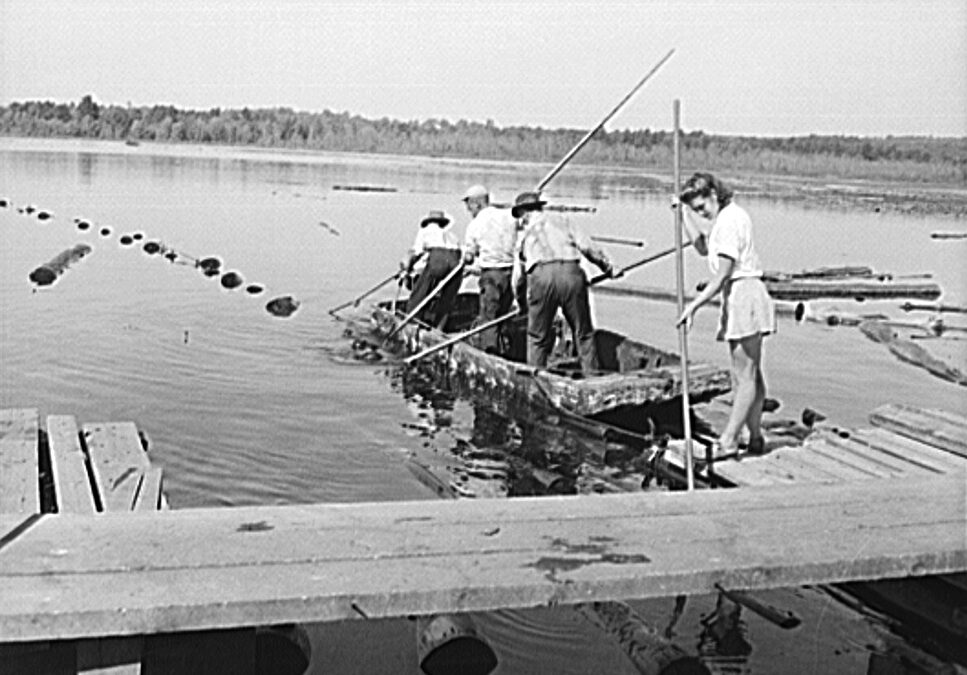“Rosie the Riveter” was the archetype for American women stepping into jobs once held by men during World War II. But few real-life women demonstrated that a female could do a man’s job any better than the “Lumber Jills” of Turkey Pond.
The great hurricane of September 1938 blew down more than a billion board feet of timber in New Hampshire. Concord’s Turkey Pond became the largest repository of logs in New England, holding 12 million board feet of white pine. In the midst of war-time labor shortages, the sawmill there struggled to keep running, so in October 1942 the National Forest Service opened its own mill on the north end of Turkey Pond intended to be run by women.
Forester Sarah Smith reported that every job in the mill, save one, was performed by the thirteen women who worked there – the government didn’t think a woman could be trained as a sawyer. Laura Willey, the head saw-filer, would spell her husband, Marshall, as sawyer and proved the experts wrong. “My mother was very determined and at over six feet tall, people tended to get out of her way,” Laura’s son John reflected.
The starting wage was $4 per day, well below the average for men performing the same work, but greater than what a woman could expect to earn elsewhere. Contemporary newspapers reported that the mill was specially equipped for women, but their boss painted a different picture. “We did not do anything more in setting up this mill than any employer should do if he gave full consideration to safety and working conditions for his men,” reported supervisor R.M. Evans.
Barbara Webber started working at the mill when she was 23; her sister Norma was 18. “We were out there at 30 below,” she said. “I remember one of the other men from another mill would come take our place so we could go out and warm our feet up in the boiler room.” Evans concurred. “Snow, rain or sub-zero weather never slowed them up,” he said. “They never missed a day.”
The women attracted national interest and were even featured in an issue of LIFE magazine. Sometimes called “log jennies” or “lumber jennies,” in the press, they preferred another moniker, Evans said. “They like to be called “Lumber Jills.”
This excerpt written by Byron Champlin was included in “Chapter 10: Called to the Colors” in Crosscurrents of Change.


 View Print Edition
View Print Edition